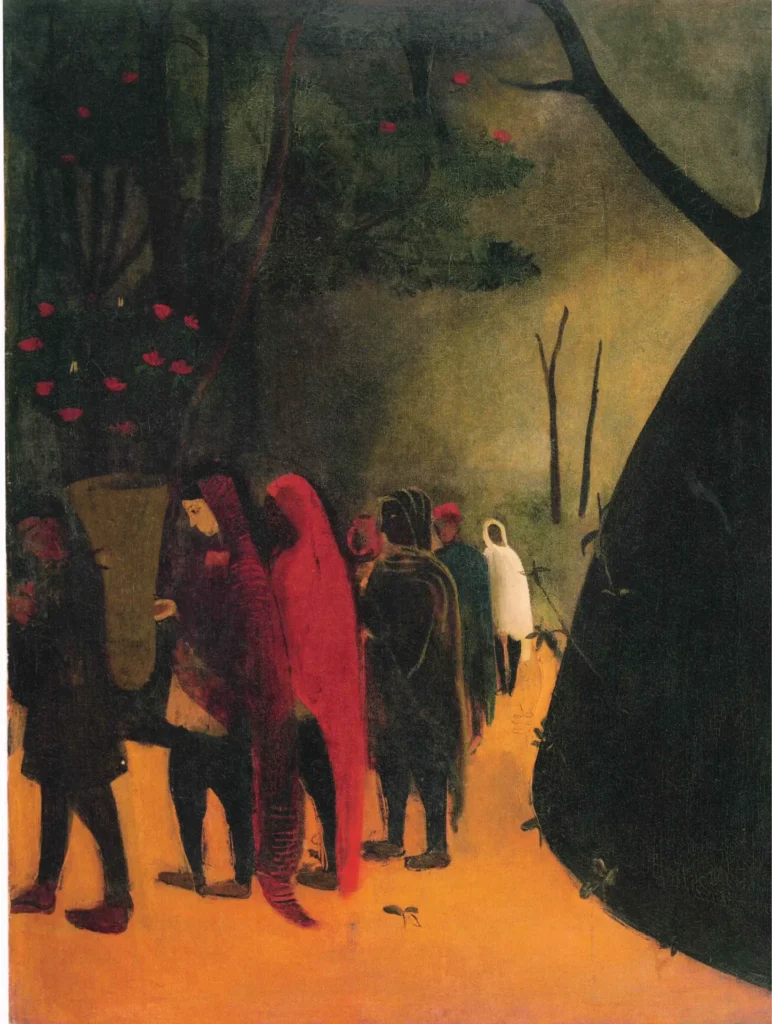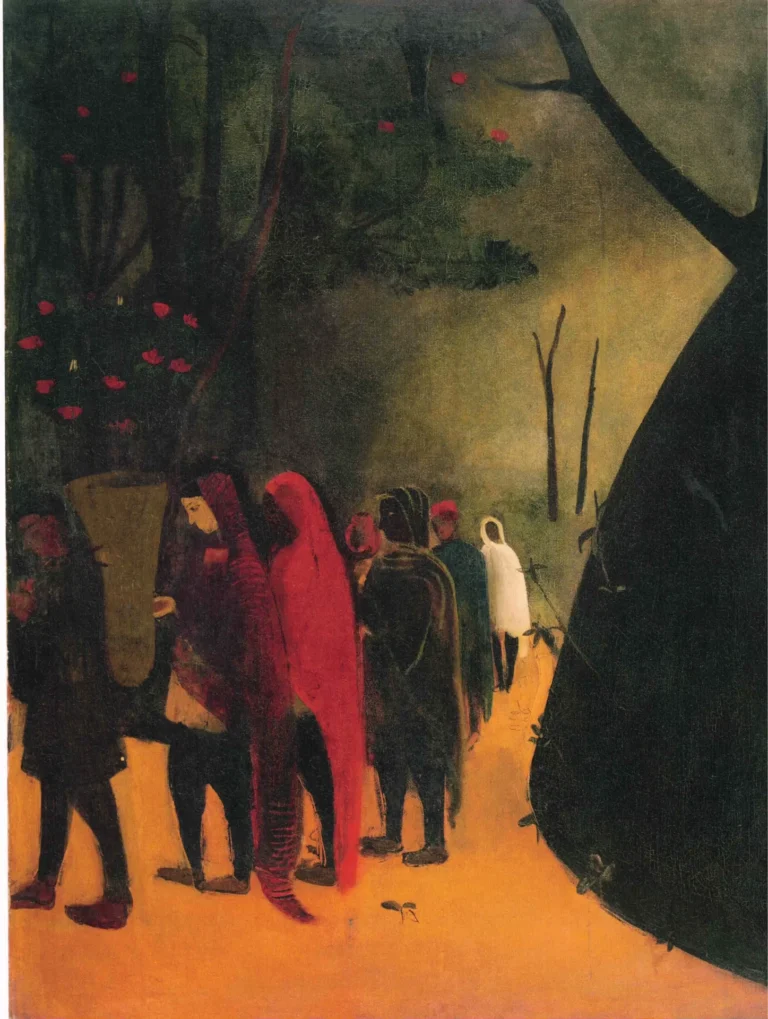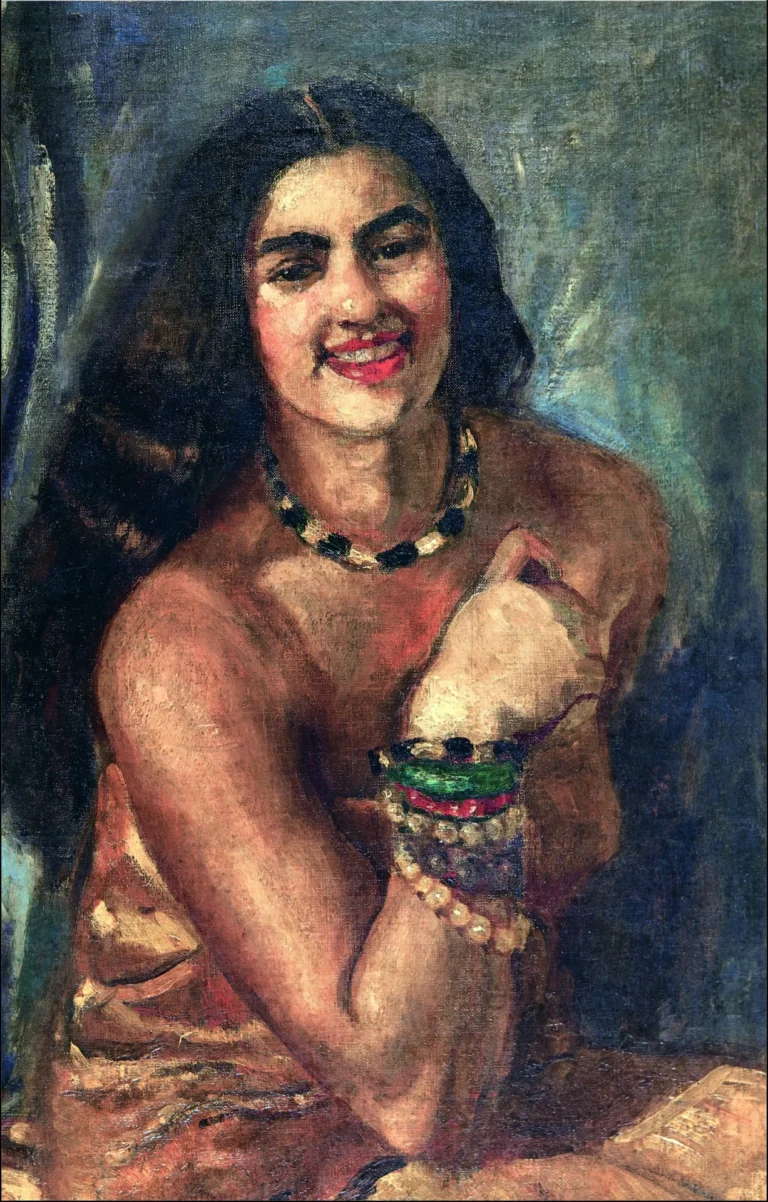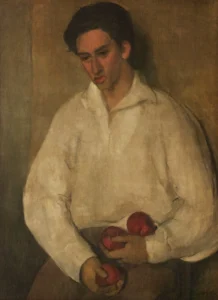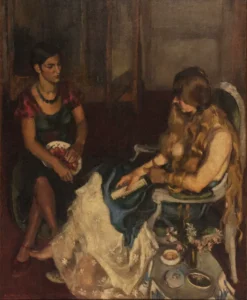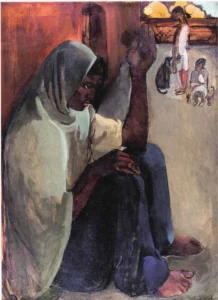Hill scene (1938)
Hill scene offers a captivating glimpse into Amrita Sher-Gil’s evolving artistic style as it was painted during her last visit to Hungary in 1938. Unlike her previous works that prominently featured figures, this piece presents a group of insubstantial figures set against a misty winter landscape, symbolizing a shift in her approach. The painting measures 67.5 cm x 89 cm and is celebrated for its masterful handling of oil and color, showcasing Sher-Gil's ability to blend diverse artistic traditions. It currently resides in the National Gallery of Modern Art in New Delhi, India.
Year 1938
About the Artwork
The story behind Hill scene unfolds during a pivotal moment in Amrita Sher-Gil's life and career. Created in 1938, just before her final journey to Hungary, Sher-Gil's painting reflects a significant transformation in her artistic vision. Set in Shimla, India, the artwork parallels her exploration of personal identity while weaving together her European and Indian heritage. In this piece, Sher-Gil moves from an engagement with vibrant figures to a more ambiguous and atmospheric representation of figures within a snowy landscape. This transition indicates her growing affinity for abstraction and a deeper introspection into the emotional resonance of her subjects, which were influenced by her time spent studying in Paris and engaging with the art movements of her day.
Did You Know
Liked what you see? Add it to your collection.
Enjoyed reading? Share it.
... continued
Creation and Context
The painting was created in 1938, a period that marks a transitional phase in Sher-Gil's work. It was painted in Shimla, India.
Style and Composition
Unlike her earlier works in India, where figures were prominently foregrounded, Hill scene features a group of figures in a misty, winter landscape that are more insubstantial. This change indicates a new distance between the artist and her subject, reflecting a shift in her artistic approach.
Medium and Dimensions
The painting is an oil on canvas work, measuring 67.5 cm x 89 cm.
Artistic Significance
This painting is part of Sher-Gil's evolution in style, which blended European and Indian elements. Her work during this period was influenced by her travels and exposure to various art traditions, including Indian miniatures and the rock-cut caves of Ajanta and Ellora. The painting reflects her unique visual language and her ability to handle oil medium and color effectively.
Current Location
The Hill scene is part of the collection at the National Gallery of Modern Art in New Delhi, India.
Artist's Background
Amrita Sher-Gil's work is characterized by a blend of European and Indian influences, reflecting her mixed heritage (her father was Sikh and her mother was Hungarian) and her art education in Paris. Her paintings often featured intense colors and a strong sense of composition, and she is credited with introducing new elements into modern Indian art.




